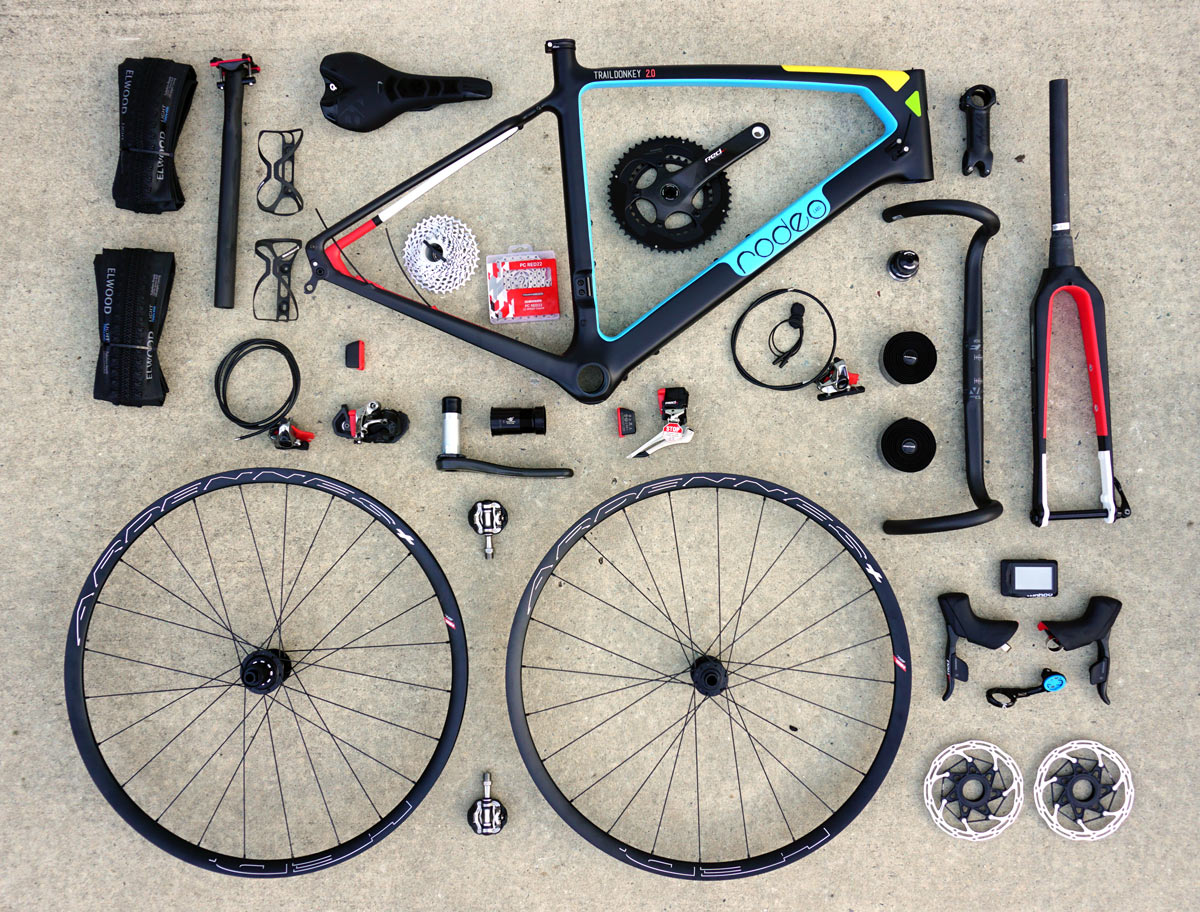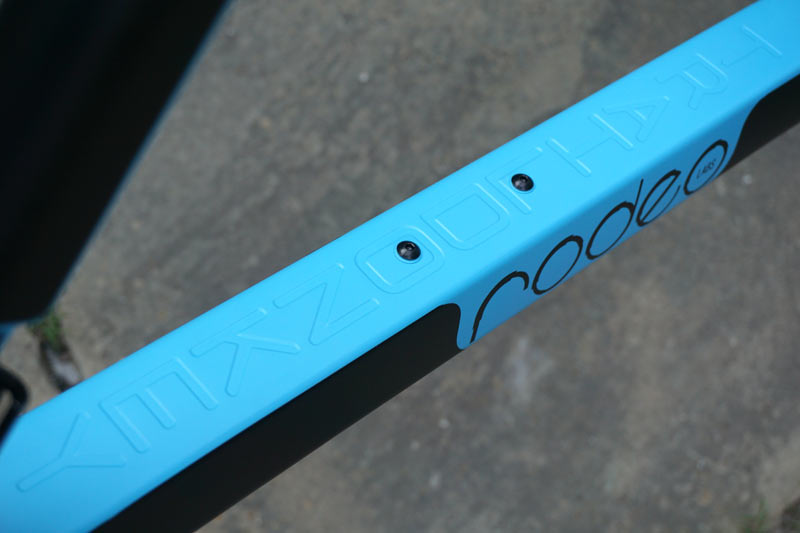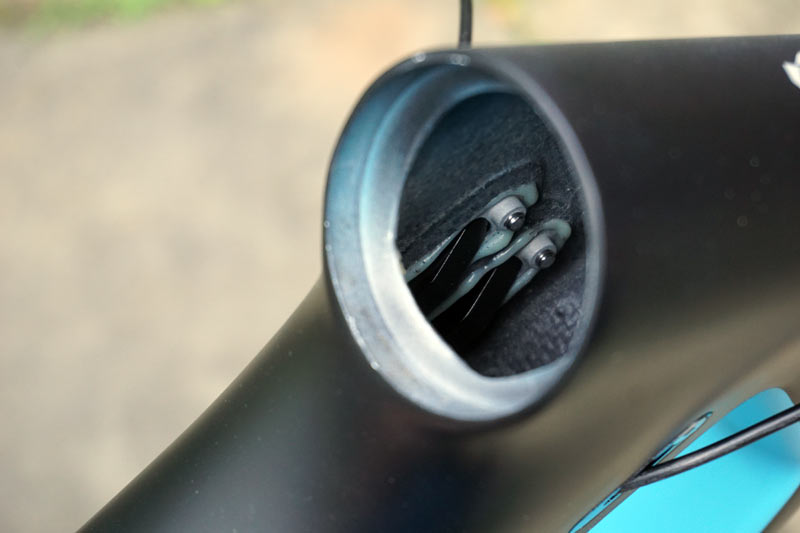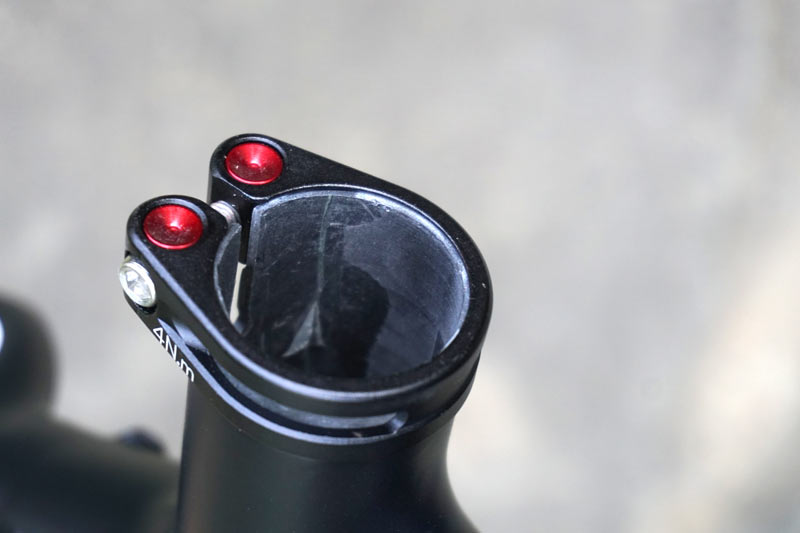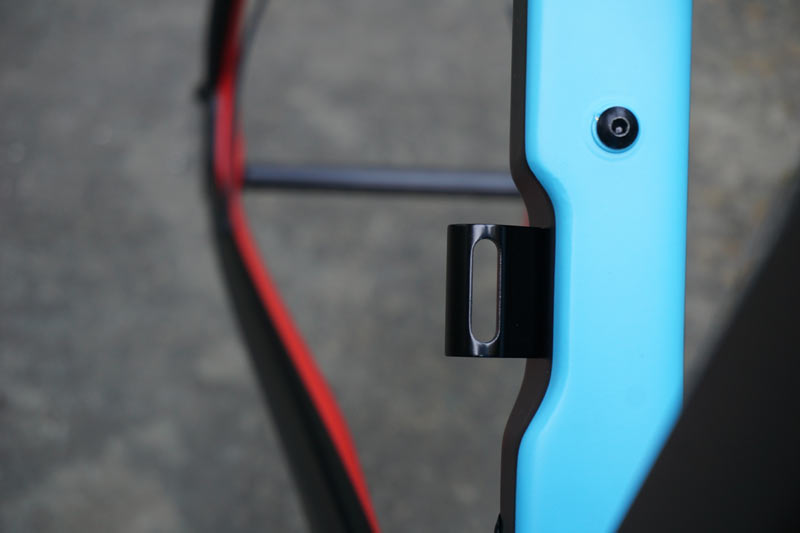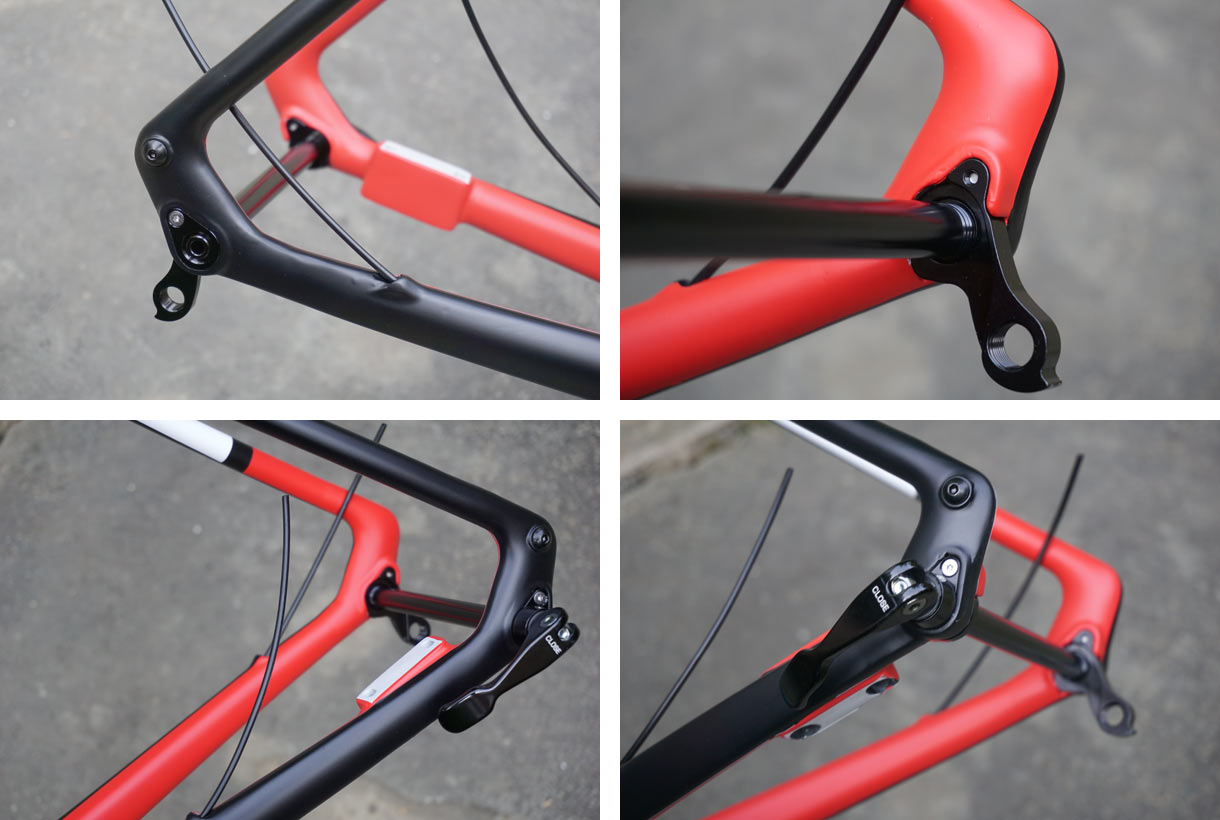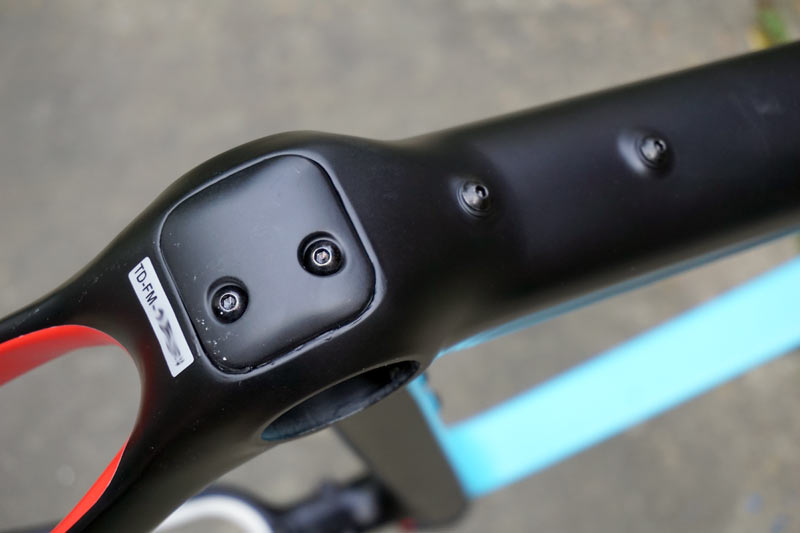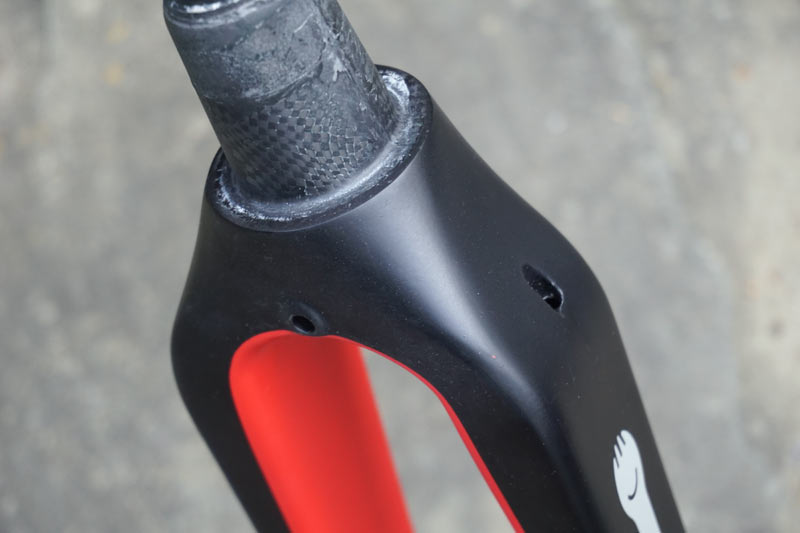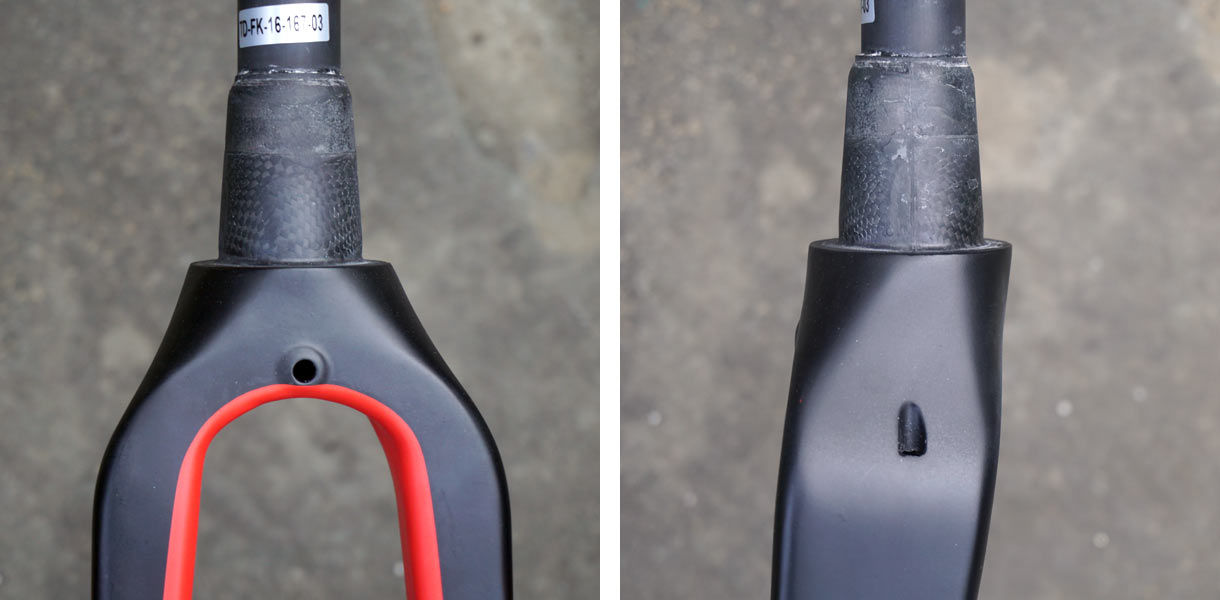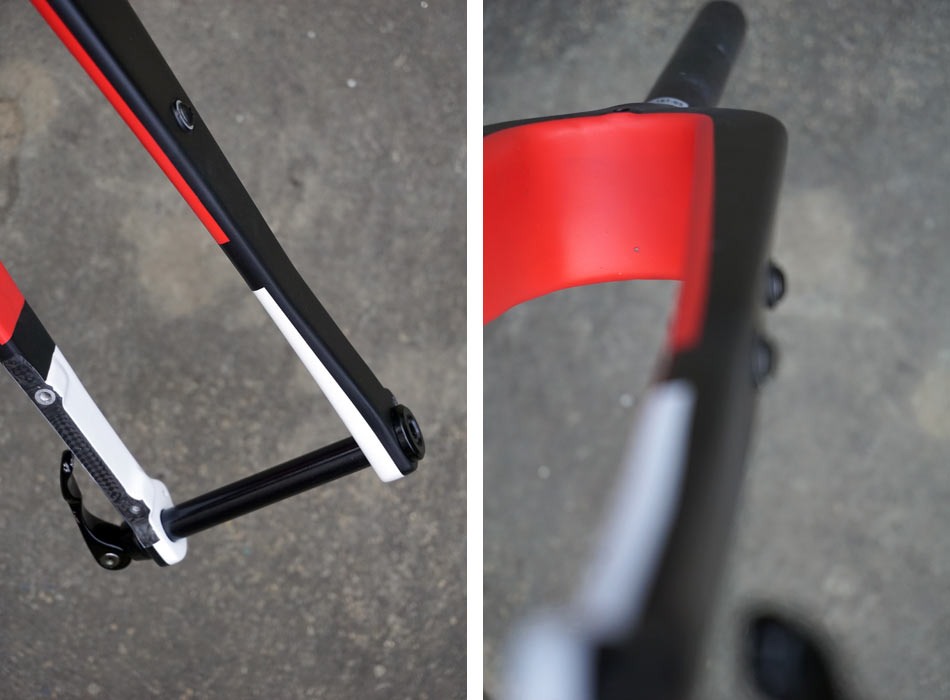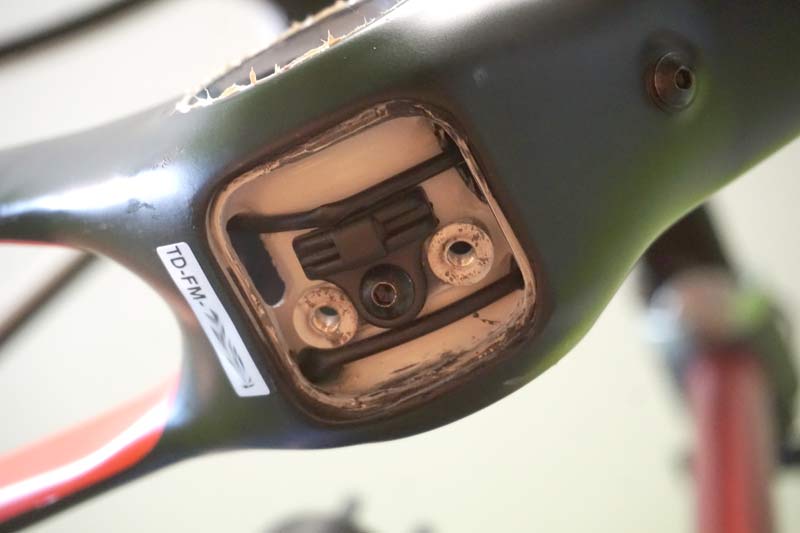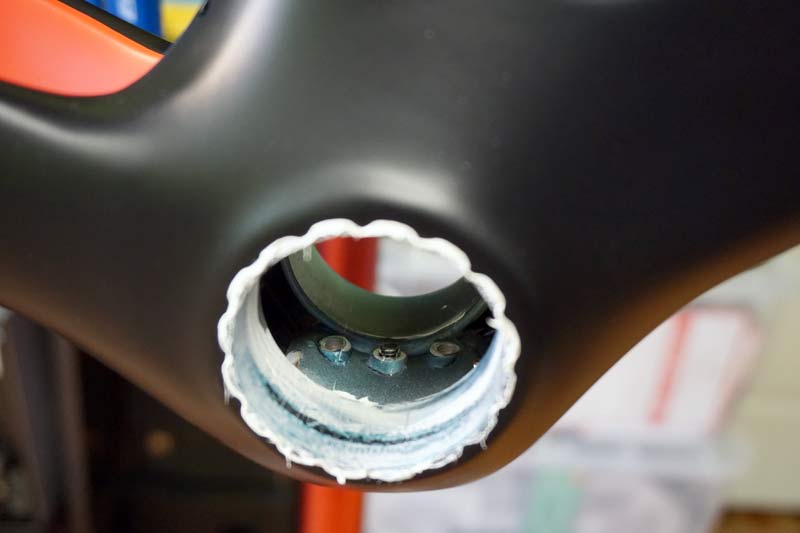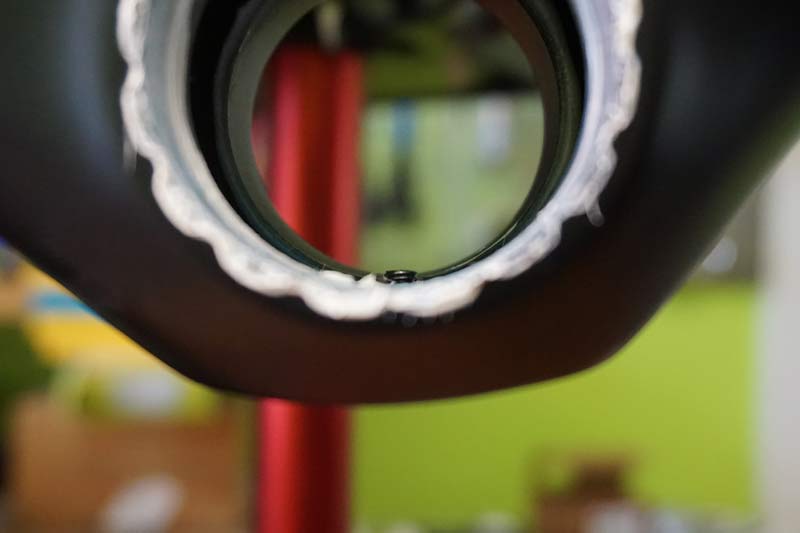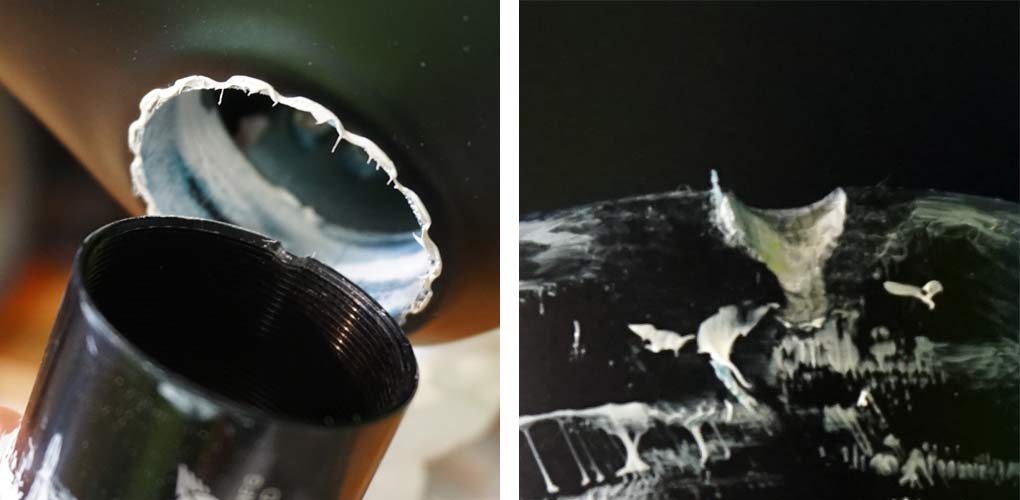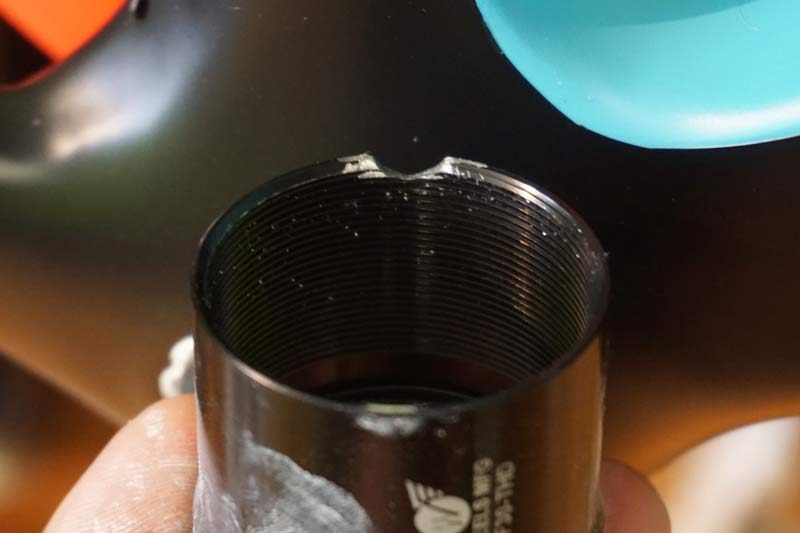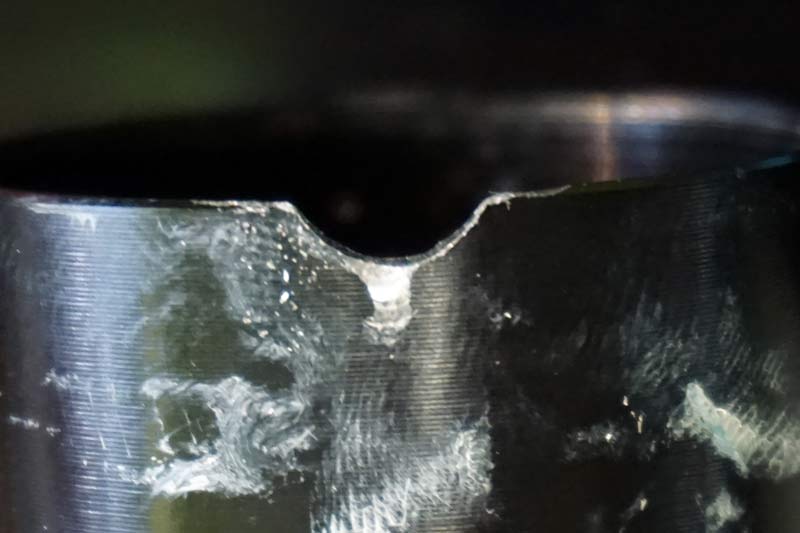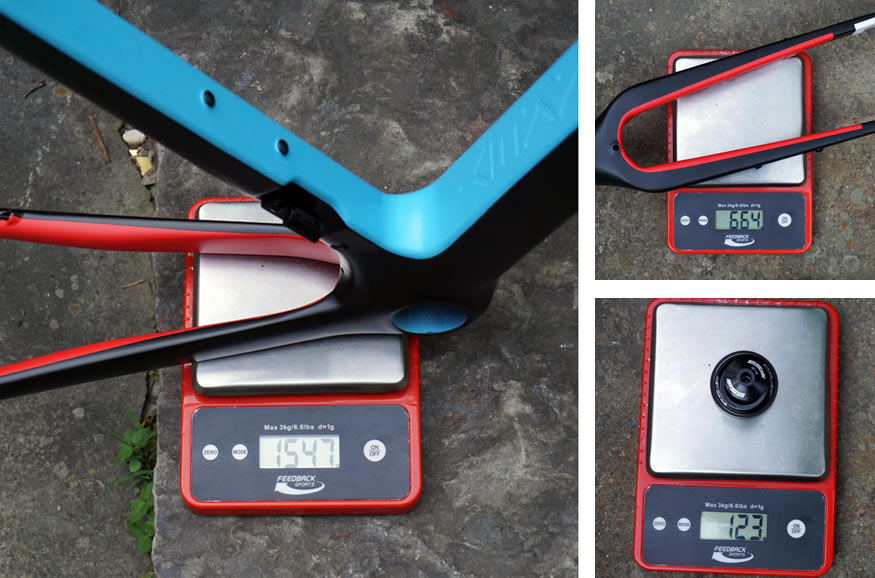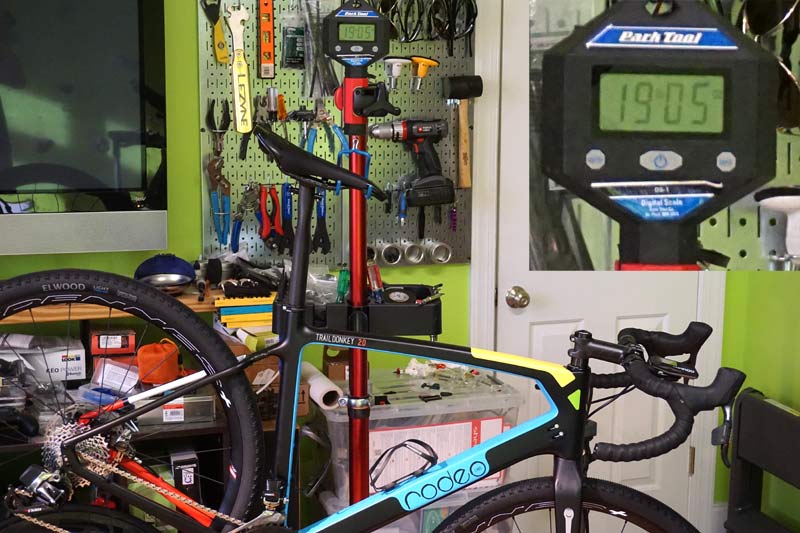If you were going to build the bike of your dreams, pulling in all the best parts and creating a mashup that could do it all and do it well, what would you make?
This year, I chose gravel, but in the loosest of terms. More like, I wanna be able to ride around town and hit anything that catches my eye. Singletrack? Absolutely. Backroads and alleys? Definitely. Running errands or just getting some ‘cross training in? Yep, that, too. So after what seemed like an actual whole year of waiting on Rodeo Labs’ Trail Donkey 2.0 to get through production and have enough availability that they could spare a frame, the third edition of Bikerumor’s World’s Funnest Bike project build began…
In this post I’ll cover the bike, followed by posts on the rolling stock, drivetrain and cockpit. So, why did I keep this project on hold for so long waiting on the Trail Donkey? Because look at it. It’s phenomenal. It’s beautiful. And it promises to be everything I wanted a do-it-all fun bike to be – light, fast, capable and good looking. It’s potential is limitless, which makes me wanna just get out and ride. And isn’t that what any good bike should do?
The Trail Donkey has a full carbon frame and comes with their full carbon Spork fork. This V.2 of the model gets thru axles front and rear and flat mount brakes. Both the frame and fork are chock full o’ mounts for bottles, racks, bags and fenders. There’s routing for a dropper post inside the top tube with an exit port just in front of the seatpost.
Replaceable cable guides let you cover unused ports, and the frame ships with removable cable guides to help ease installation of mechanical drivetrains and/or disc brakes.
Framesets come with an alloy seatpost collar and an FSA headset.
The inner faces of all front triangle tubes are flat, and the front derailleur mount is notched into the frame a bit for proper positioning. It’s removable for cleaner 1x builds.
Dropouts are full carbon with alloy inserts for the derailleur hanger and axle carriers. This allows them (you) to swap between 12×142 or 135mm QR, and parts for both are included with the frame. If you opt for the quick release setup, the skewer threads directly into the driveside insert, so there’s no need for a nut and the connection is more secure.
Third water bottle mounts are under the downtube. Cable routing is made easier with a removable BB shell cap, which hides a bolt-on cable manager. More on that in a minute…
RODEO LABS SPORK 1.1
The Spork 1.1 is their full carbon adventure fork to go with the Trail Donkey. It gets a more mountain bike friendly 15mm thru axle at the bottom and full carbon steerer up top.
Brake hose routes through the leg. Routing of the hydraulic brake lines through both frame and fork was easy. The fork required no guide, but I did tape the pre-installed cable guides to the brake hose to help pull it to the right holes. Removing the bolt-on cable stops opens the holes up just enough to make it easier to guide the hose in and out of the frame.
Max tire clearance for the fork is 700×56, and 700×52 for the rear. The frame, fork and geometry are all optimized for 700c wheels and tires, but it’ll work with 27.5 wheel and larger tires like the WTB Horizon 47c slicks.
Framesets retail for $2,560 and are available in three colors…this one’s “blue”.
ASSEMBLY NOTES
Under the BB shell cover hides integrated cable management. This small black plastic piece is removable and threads into the frame, which is sorta good and bad. Good because you can remove it if you don’t need it. Bad because the bolt protrudes slightly into the BB area:
Here’s why that’s bad: If your bottom bracket is a full diameter, full width press- or thread-in piece like those from BBinfinite, Praxis, Wheels Manufacturing, etc., there might be clearance issues.
For this project, I chose the Wheels Mfg. PF30 Threaded bottom bracket. The two sides thread together to create a solid connection and align the bearings. This model has Enduro angular contact bearings, which should keep things running smooth for years to come. The design means the center shell of the BB is the same diameter as the edges that press into the frame. Because the Trail Donkey’s cable guide bolt protruded into this space by about a millimeter, it scraped and notched the BB as I pressed the driveside into place.
Fortunately, the solution was simple: Remove the cable guide. Because this project bike is getting SRAM Red eTap, baby! So, that worked out well for this build. After I filed away the deformed part of the BB and cleaned out the threads, it went together as intended.
I mentioned this issue to the team at Rodeo Labs and they said they hadn’t experienced that problem before. Many bottom brackets, particularly non-threaded pressfit models, won’t have this type of clearance issue. It only became an issue here because of the particular BB I chose to use. Wheels Mfg. also makes non-threaded PFBB models, as do most every other BB manufacturer. Had I needed the cable guide, the other solution would have been to file down or replace that bolt.
ACTUAL WEIGHTS
Claimed frame weights range from 1,250g (54) to 1,450g (58) unpainted. Our test bike is a size 58 and came in at 1,547 fully painted and will all hardware….which counts a lot of bolts, far more than the usual four water bottle bolts. The fork with uncut steerer came in at 664g, and the FSA headset is 123g. Add it all up and it’s a 2,334g frameset.
That translated into a complete bike weight of 19lb 5oz (8.76kg). So, what else is on it and why’d I pick these parts? Stay tuned…
